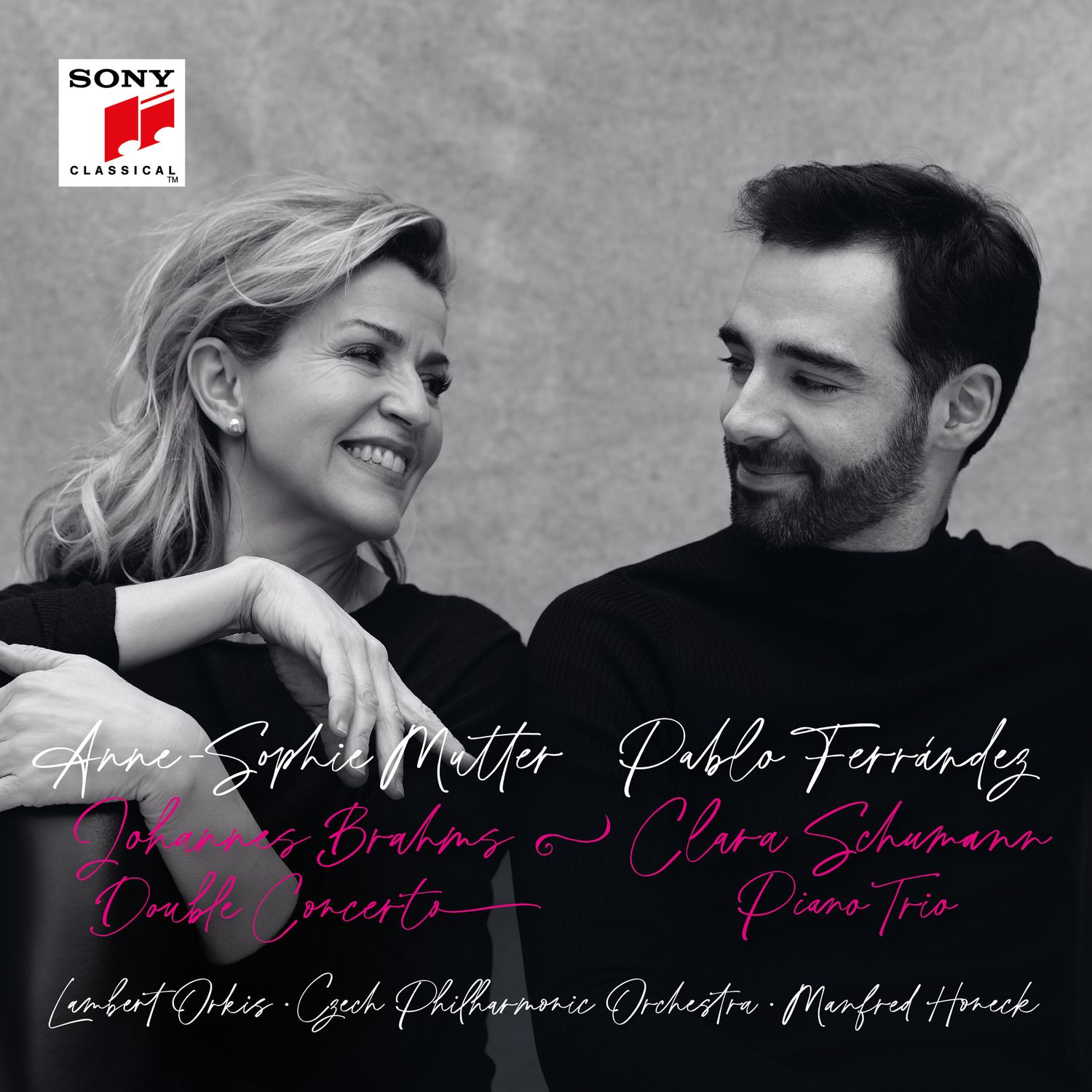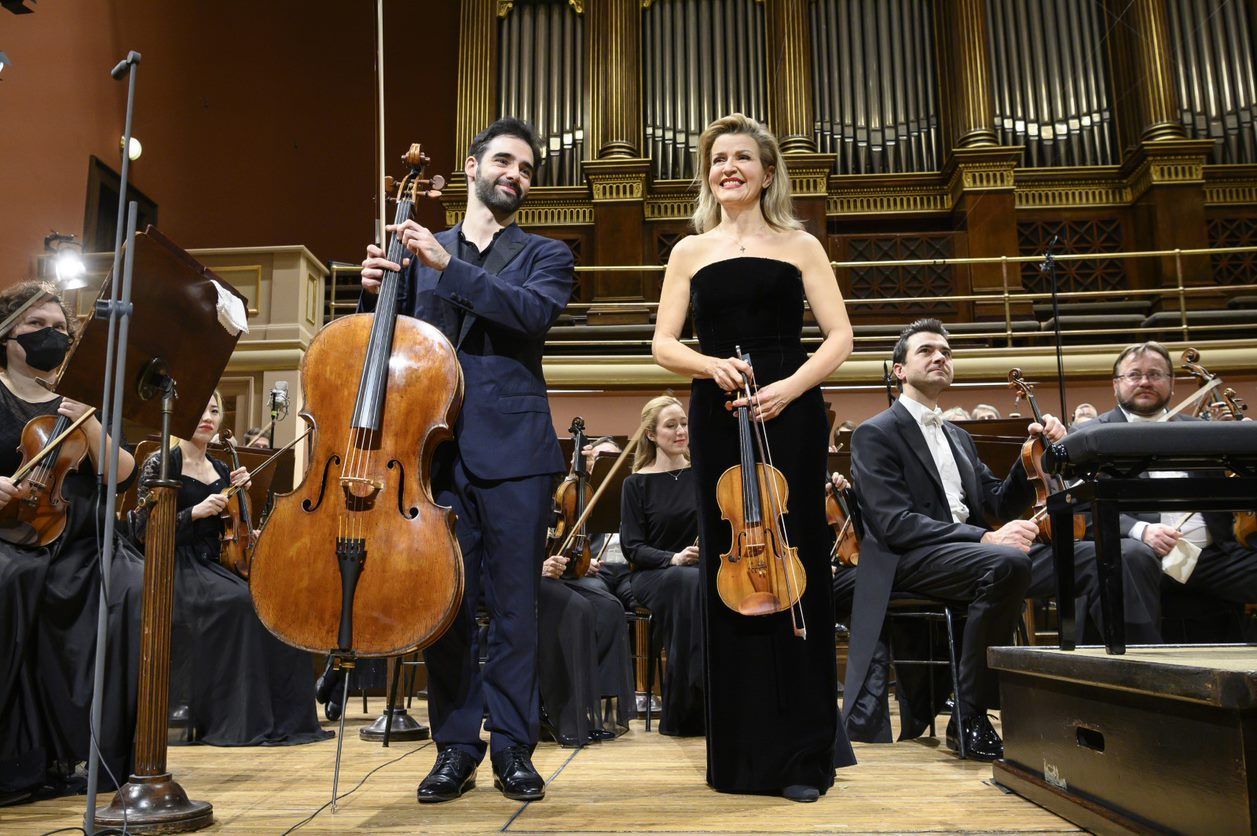Brahms and Clara Schumann: Anne-Sophie Mutter and Pablo Ferrández on Sony
Anne-Sophie Mutter and Pablo Ferrández in stunning form in Brahms

This disc celebrates the musical of Anne-Sophie Mutter and cellist Pablo Ferrández. Mutter it was who discovered Ferrández' talent early on, describing him as “someone truly special,’ and inviting him into her foundation and circle of “Mutter’s Virtuosi” and theu clearly spark off each other. For the Clara Schumann PIano Trio, they are joined by Muter’s regular pianist, Lambert Orkis.
Here is a taster for the disc, which includes interviews.

The disc opens with Brahms’ Double Concerto in A-Minor, Op. 102 in a live performance. Follow this link for the impassioned first movement. There is no way that Fernández is in any way (pardon the pun) second fiddle here - his playing is authoritative right from the explisive start. It is when the two play together though that the magic begins. and while Brahms’ canvas is huge, there are multiple moments of whispered intimacy. The orchestra is absolutely on fire - there is a characteristically warm sound from the Czech orchestra that suits Brahms perfectly, and there is zero shrillness from the upper strings, all cradlied in a superlative recording from Sony. Honeck is a fine conductor, as I found out in a taster concert for the 2020 Gstaad Festival (review here). There are moments of superb detail (some woodwind scoring that often gets missed, for example), but it is the combination of intimacy and the grand sweep of the tuttis that is most impressive.
This is the last of Brahms's concerto (and also his orchestral work). The first performance was conducted by the composer, in Cologne in 1887, with Yosef Joachim and Robert Hausmann as the soloists. I can actually count on the fingers of one hand the number of times I have heard this live - listening to utter and Fernández does make me ask why this is. The slow movement is suffused with twilit beuty juxtaposed with impassioned outburst - in this performance we really hear Brahms the Progressive, as Schoenberg called him! The theme itself is archetypal autumnal Brahms, and how Mutter and Fernández relish this interior world.
The finale is remarkable - one really feels the gritty edge to the performance; it is as if lyricism is trying to escape from a confined space.
This taken from live performances in Prague’s Rudolfinum in January 2022, and teh excitment is palpable. I would go as far as to say this is the finest modern account of the Brahms Double, and should sit alongside the time-honoured David Oistrakh / Mstislav Rostropovich version with the Cleveland Orchestra under Szell (1969: here’s the first movement from that recording) and the Isaac Stern / Leonard Rose CBS performance with the Philadephia Orchestra under Ormandy.
The coupling is inspired: I mentioned the chamber-like rapport between Mutter and Fernández. Well, they are joined byMutter’s regular pianist, Lambert Orkis, for a performance of Clara Schumann’s Piano Trio in G-Minor, Op. 17 (1846). Bizarrely, Pablo Fernández used to live in Clara Schumann’s old house (!) - as a student, his sponsors owned the house in Frankfurt where Clara had spent the last 18 years of her life. Mutter, meanwhile, finds the piece “deeply unsettling, and extrtemely complex piece”.
The fire and ferocity of the first movement finds its balance in intensely lyric melodic answers. There are moments that could be almost symphonic (and some of the chordal progressions and the layout of the chords even seem to link to Brahms’ Double Concerto!).
The Scherzo is astonishing, its Trio almost a slow movement in its intensity and grace.The third movement can be seem here in film version. It is basically a Lied ohne Worte, and the gentle opening of the finale seems the ideal segue.
As opposed to the Double Concerto, the Piano Trio is a studio performance, and a highly considered one. A magnifcent disc.
